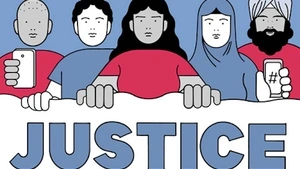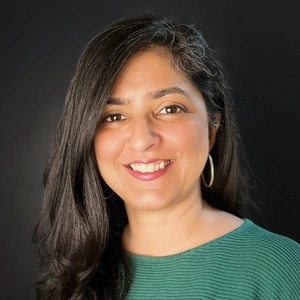Faculty Expert
-
Ameena Ghaffar-Kucher
Advanced Senior Lecturer
Policy, Organizations, Leadership, and Systems Division
This month, educators will have to consider how they discuss the 20th anniversary of the 9/11 attacks with students who have no living memory of that day or the events that unfolded in the aftermath.
Teaching the history of that Tuesday is important. But Penn GSE’s Ameena Ghaffar-Kucher says the lesson shouldn’t stop with the horrors of the plane crashes or the heroics of the first responders. Rather, this is a chance for students to examine how 9/11 has shaped much of the last two decades, in America and around the world.
Ghaffar-Kucher and a team of educators, scholars, and community activist leaders created the Teaching Beyond September 11 curriculum project to help deepen students’ understandings of how the attacks continue to reverberate in communities across the globe.
The curriculum, aimed at high school and college students, features 20 modules, each grounded in a year between 2001 and 2021, exploring themes like social justice, representation, public opinion, democracy, and US foreign and domestic policy. Teachers may pick and choose which modules they wish to teach; further, the lessons within the modules can be taught sequentially or individually. And the curriculum is designed to take these conversations beyond social studies classrooms, with ideas for teaching in literature, art, and other subject areas. To receive new modules as they are released, sign up for the Teaching Beyond September 11 modules.
Drawing from the curriculum, Ghaffar-Kucher offers these suggestions for how you can broaden lessons related to September 11:
Discussing civil liberties
In the weeks, months, and years after 9/11, a series of laws was passed with the intention of improving state security that gave American law enforcement services new powers and raised questions about civil liberties.
The “no-fly” list, for example, was designed to prevent suspected terrorists from boarding planes. But scores of people with no connection to terrorism — including the late Sen. Ted Kennedy and Rep. John Lewis — wound up being listed, which made air travel difficult to impossible for them.
This example can be a jumping off point for a discussion about how laws are made, and the potential unintended consequences they can have beyond the originally targeted group, even when the law is widely-supported.
Addressing Islamophobia
Islamophobia has a long history in the United States and elsewhere in the world. But 9/11 supercharged the hate and bigotry on both a personal and political level. Muslim and Arab Americans, as well as those mistaken to be Muslim, felt under suspicion or under attack. Barack Obama’s first campaign for president was filled with accusations that he was a “secret Muslim.” And one of Donald Trump’s first actions as president was to ban immigrants from some predominantly Muslim countries.
Given that Islamophobia in the United States is tied to racism and xenophobia, educators can discuss the concept of identity and how Muslims, immigrants, and people of color are often excluded from conversations about “real Americans.” This is especially important given that many of these groups have been in the United States since the 1800s and some even earlier. For example, between 10-30% of enslaved people brought to the Americas from the 1600s onwards were Muslim.
Reflecting on media representation
Over the last 20 years, we have seen more Muslim characters in mainstream shows and movies. But the women are often seen as repressed victims and the men are often portrayed as plotting terrorists.
Raise questions about how media portrayals like these can affect public perceptions and how those perceptions, in turn, can affect everything from community support for a new mosque project to attempts to ban wearing a hijab in public to how actions are perceived by Muslim members of Congress.
Interrogating hate violence
Xenophobia, white supremacy, and Islamophobia also affected non-Muslim communities post 9/11. Sikh Americans have been the victims of hate crimes since they first immigrated to the US more than 125 years ago. But the community saw a spike in violence against them after 9/11, starting with the murder of Balbir Singh Sodhi just four days after 9/11 to the recent April 2021 murder of eight people, including four Sikhs, at a FedEx facility in Indianapolis.
Have students reflect on identity, and the assumptions we often make based on not just race and ethnicity, but even articles of clothing. Contrast the assumptions that are often made about white Americans with those made about people of color, for example white men with beards verses brown men.
Building solidarity
The drastic increase in hate crimes against Muslim, Arab, and Sikh communities has impacted these groups within the classrooms as well. Cases of bullying and harassment not just from peers but also teachers and administrators are well documented.
The most infamous example came in 2015, when Ahmed Mohamed, a young Black Muslim boy was accused of bringing a bomb to school. In reality, he just wanted to show off a clock he had made. Creating a space where all children in the classroom feel that they belong – irrespective of their race, gender, ethnicity, or religion – is something all teachers can work towards.

This project is generously funded by the University of Pennsylvania’s Global Engagement Office with support from Penn’s Graduate School of Education and the Penn Libraries. Additional support comes from Penn’s Middle East Center and the South Asia Center.
Subscribe to the Educator's Playbook
Get the latest release of the Educator's Playbook delivered straight to your inbox.
Media Inquiries
Penn GSE Communications is here to help reporters connect with the education experts they need.

